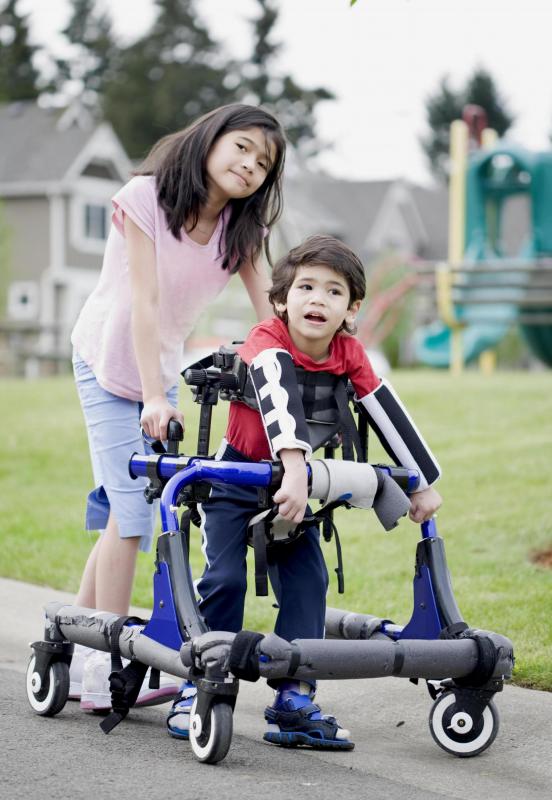At WiseGEEK, we're committed to delivering accurate, trustworthy information. Our expert-authored content is rigorously fact-checked and sourced from credible authorities. Discover how we uphold the highest standards in providing you with reliable knowledge.
What are Common Causes of Scoliosis?
Scoliosis is a medical condition that causes an abnormal curvature of the spine. There are several different types of scoliosis, each having a different cause. These may include diseases like cerebral palsy, as well as various injuries and illness. Some types of scoliosis develop before birth, while other types develop at various times throughout a person's life. Treatment for the different types of scoliosis depends on the individual symptoms and can include supportive devices such as braces or, in some cases, surgical intervention.
Neuromuscular scoliosis involves abnormal development of muscles and nerves. Causes of scoliosis of this type include diseases such as spina bifida and cerebral palsy. Spina bifida occurs when the bones of the spine and the spinal canal do not close completely before birth. Cerebral palsy is often caused by brain damage due to a birthing accident or head trauma that occurs during the first few years of life. Congenital scoliosis is defined as a bone abnormality that is present at birth.

Some causes of degenerative scoliosis include injury or illness that causes some of the bones of the spine to collapse. Bone diseases such as osteoarthritis are often the cause of this type of scoliosis. In some families, genetics may contribute to the many possible causes of scoliosis.
Sometimes direct causes of scoliosis are not readily apparent. This type of scoliosis is referred to as idiopathic scoliosis. Regardless of the causes of scoliosis, many of the symptoms are the same. The abnormal shape of the spine can often cause pain and difficulty moving. Treatment is aimed at relieving as many of these symptoms as possible. Pain medications are often needed in order for the patient to be able to cope with the pain of the condition as well as the discomfort caused by some of the treatment options.

Supportive devices such as braces are frequently used in an attempt to prevent the spine from curving any further. This method of treatment is most successful in children who are still growing. Unfortunately, braces do not correct the damage that has already occurred.
The most common treatment for scoliosis involves surgical intervention. This type of treatment involves major surgery and has significant risks, such as paralysis. However, for many patients this is the only treatment method that allows any hope for a normal life. In this procedure, the bones of the spine are often fused together in order to give the spine a more normal shape and provide for easier movement for the patient.
AS FEATURED ON:
AS FEATURED ON:














Discuss this Article
Post your comments